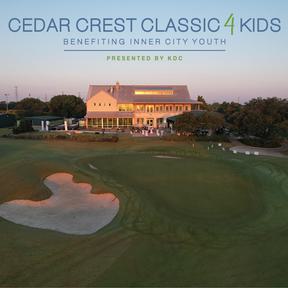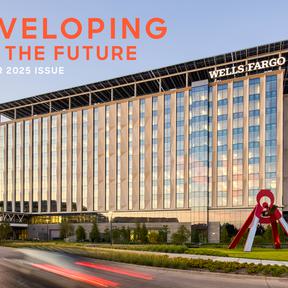The “People” Aspect of Healthy Buildings
06/03/21 | Thought Leadership
Fitwel Certification System Advances Healthy Buildings
KDC’s Bill Guthrey, senior vice president of land development, and Debra Velez, senior vice president of design & construction
A new survey of the world’s leading real estate investors finds that 92% of respondents expect demand for healthy buildings to grow in the next three years. This survey of managers and stakeholders representing portfolio investments in real estate totaling approximately $1.03 trillion is the core of a study titled, “A New Investor Consensus: The Rising Demand for Healthy Buildings.”
Coordinated by the United Nations Environment Programme Finance Initiative, the Center for Active Design (CfAD) and BentallGreenOak, the study defines healthy buildings as those optimized for occupant health and safety through a mix of siting, design and operational strategies that measurably improve physical, social and mental health indicators.
So how do building owners signal that their buildings are healthy? They do it by obtaining a rigorous, third-party healthy building certification from Fitwel.
Operated by global nonprofit, CfAD, Fitwel describes itself as, “the world’s leading certification system committed to building health for all.” It sets the industry standard for evidence-based strategies to promote positive health outcomes for occupants and communities.
The U.S. Centers for Disease Control and Prevention (CDC) and U.S. General Services Administration are Fitwel’s original founders. The CDC remains the research and evaluation partner for Fitwel, while the CfAD is the licensed operator charged with expanding Fitwel to the global market.
With Fitwel, building owners can certify a single project or an entire portfolio. Those that choose to certify multiple properties are known as “Fitwel Champions.”
Bringing people into the spotlight
Many real estate experts often confuse Fitwel and the U.S. Green Building Council’s Leadership in Energy and Environmental Design (LEED). Fitwel does not replace LEED.
LEED is a series of rating systems aimed at increasing the environmental and health performance of building sites, structures and neighborhoods. By contrast, Fitwel emphasizes building occupants, whether they’re office workers or renters. It brings people into the spotlight and focuses on the impact the building’s environment has on them.
Another big difference is that LEED designation, (Gold or Platinum), is a one-time designation. An owner applies, and if it’s approved, the building becomes LEED certified.
Fitwel, on the other hand, evaluates performance metrics over several years. Just like the people it focuses on, Fitwel’s certifications “live, breathe and evolve.”
Pandemic accelerated demand for healthy buildings
Demand for healthy buildings has been steadily rising over the last decade, according to the CfAD’s study. Nearly 70% of respondents indicated they were seeing increased demand prior to the pandemic.
Tenants are driving demand for healthy buildings, according to 95% of the study’s respondents. Strong or moderate demand is coming from the office sector (87%).
Fitwel data indicates the global real estate sector is increasingly eager to demonstrate its health and well-being credentials to build trust among building occupants and positively impact human health. Third-party studies are reinforcing the importance of these initiatives. A recent report from the Massachusetts Institute of Technology found that healthy buildings generate rental premiums of 4.4% to 7.7% on average, as compared to their non-health-promoting peers.
The CfAD’s study found that 89.5% of respondents plan to enhance their company’s health and wellness strategies in the coming year. But the motivations for doing so are quite diverse. All respondents cited COVID-19 as one of the motivating factors. Other core reasons for investing in these strategies include human health (86%), tenant satisfaction (71%), market differentiation (71%), enhancing reputation (57%) and compliance concerns (43%).
Advocating for people-centric design
When KDC meets with potential and existing clients, the subject of Fitwel often comes up during the conversation. In fact, companies are so interested in the certification program that we’ve added Fitwel to certain marketing materials.
One of KDC’s corporate clients, Independent Financial (formerly Independent Bank), is exploring Fitwel certification. KDC is also seeking a LEED Silver Certification for the company’s Phase I headquarters in McKinney, Texas.
Currently, KDC is developing Phase II of Independent Financial’s headquarters. The six-story, 198,000-square-foot building will more than double the company’s existing presence.
Phase II will feature a sleek glass exterior and expansive terraces, complemented by a mature greenbelt. Building occupants will enjoy views of the water feature and have direct access to walking trails, a full-service fitness center and a grab-and-go dining area.
Fitwel serves as a guide, so companies such as Independent Financial know how to design their office buildings from the inside out. KDC and its corporate partners call this people-centric design, which is all about retaining and attracting the most talented employees.
Smart companies have realized that profitability is directly tied to employee satisfaction. When employees are happy, they’re more productive and the corporate brand is stronger, both of which contribute to increased profitability.
Learn more about Fitwel at www.fitwel.org.




